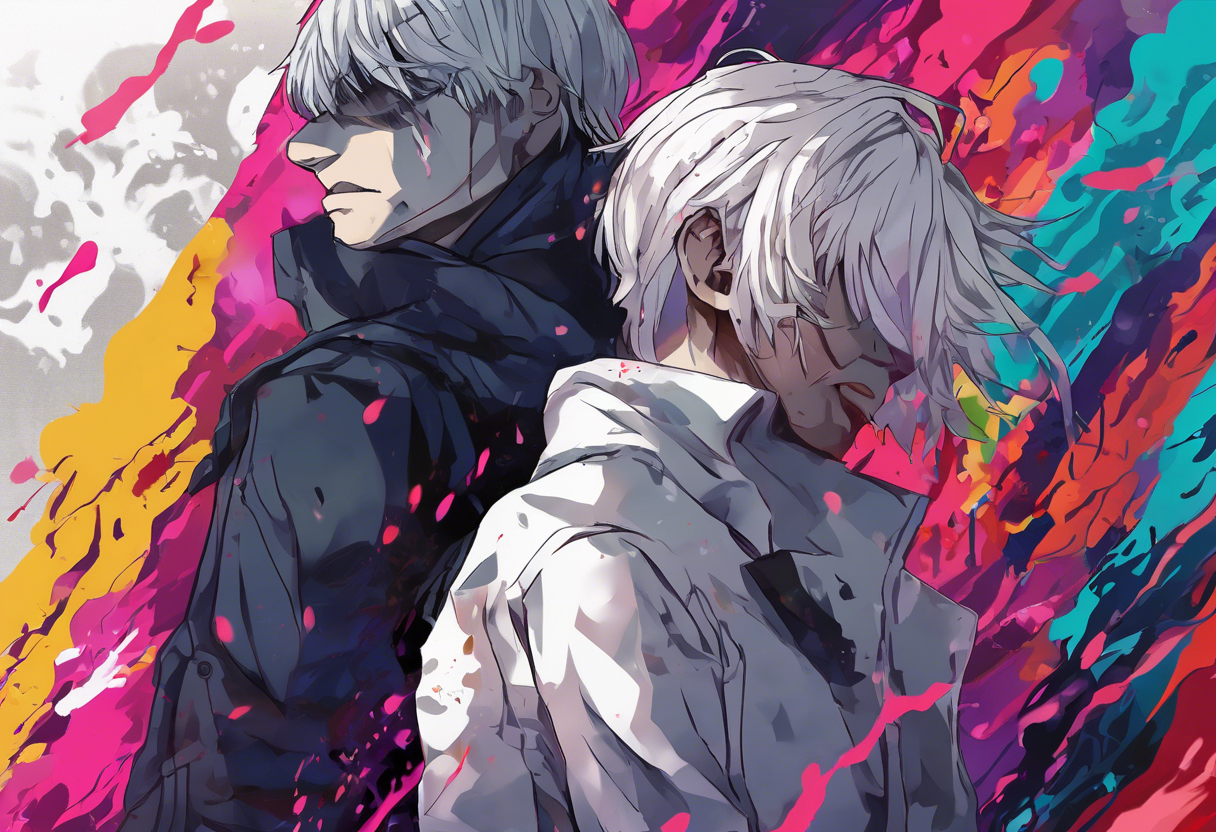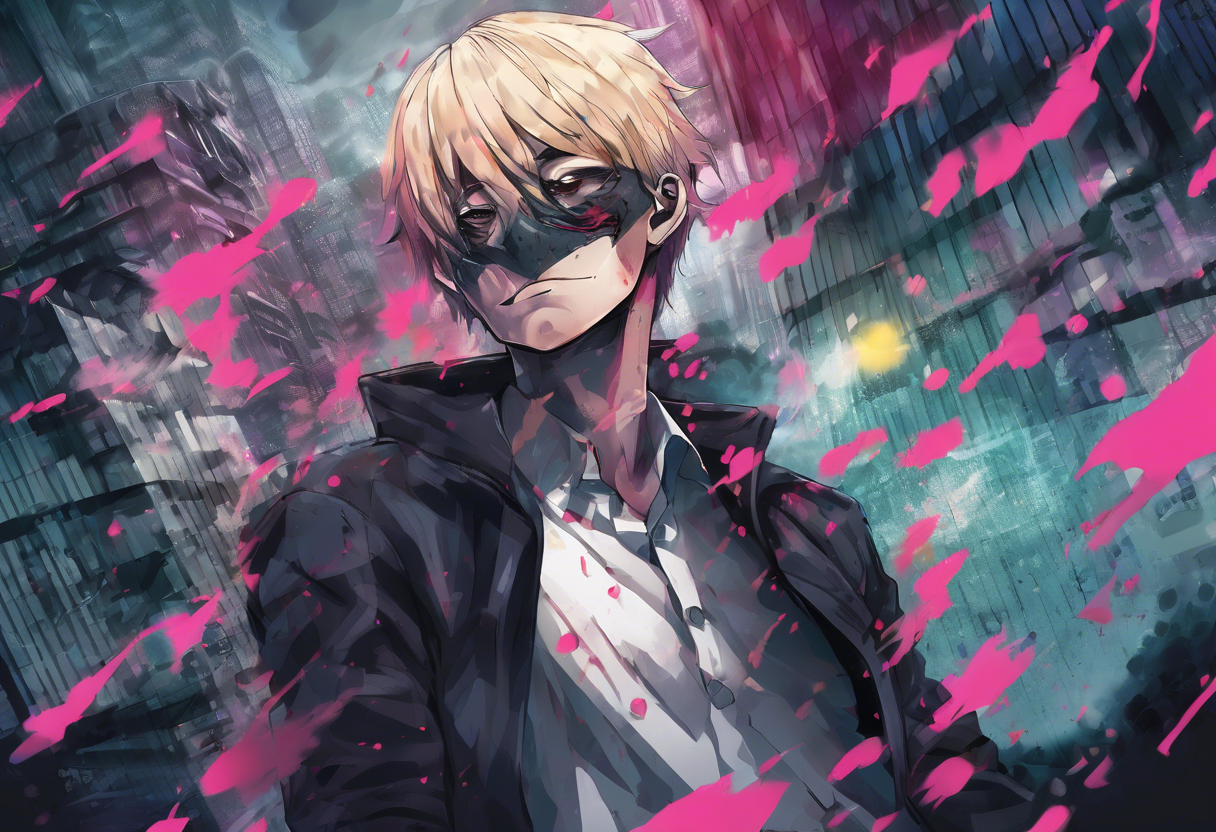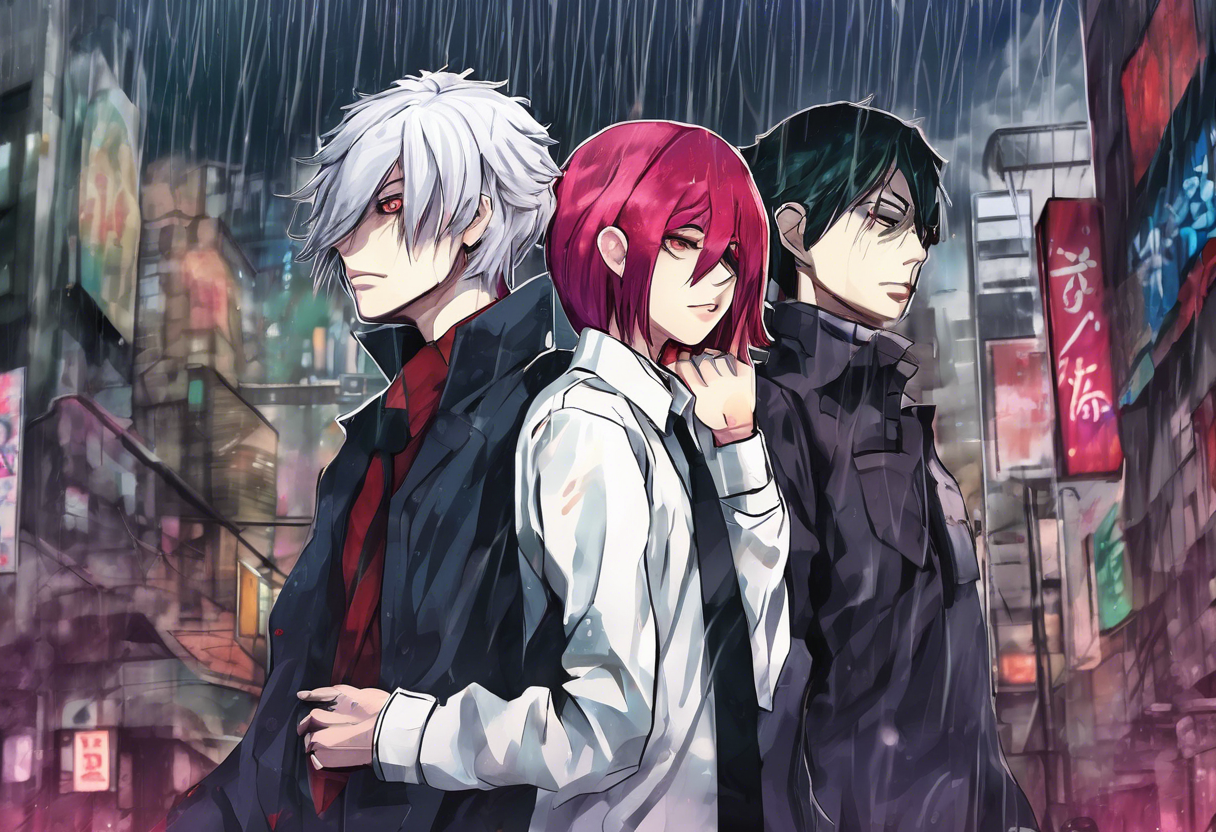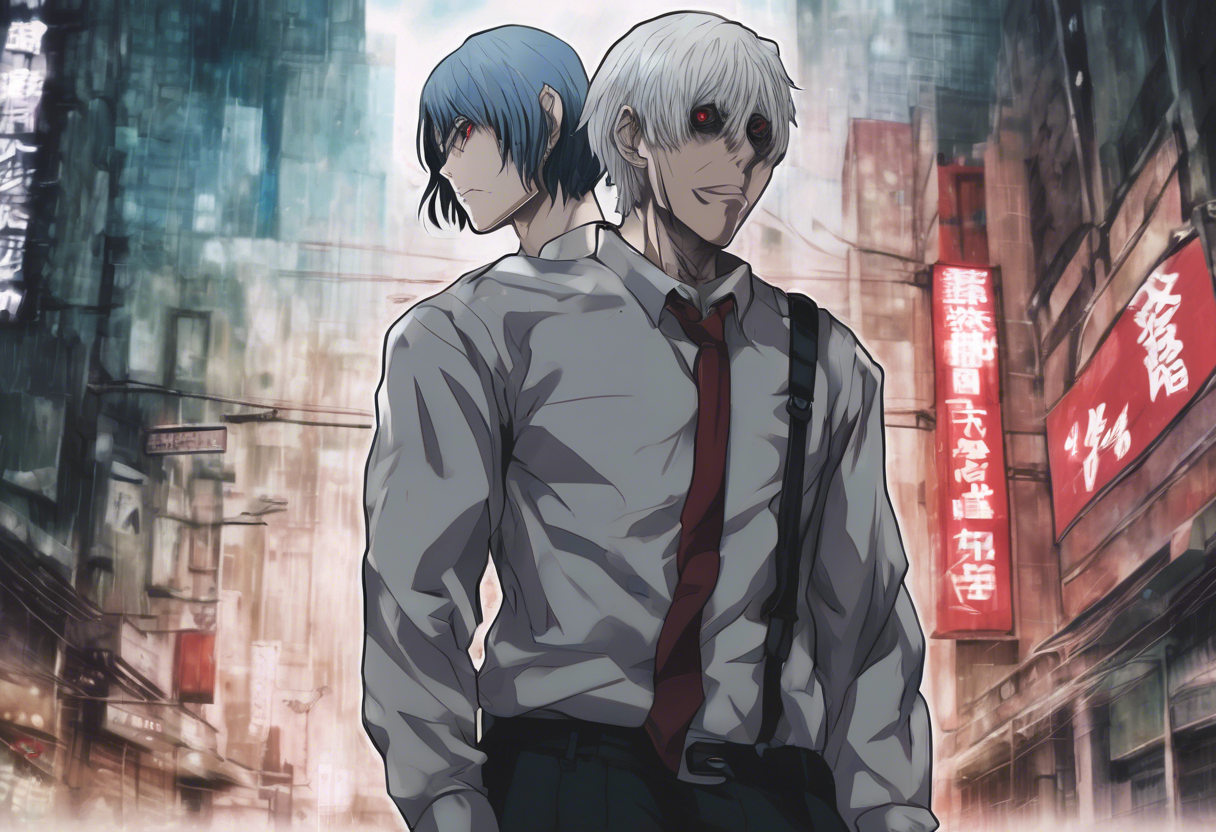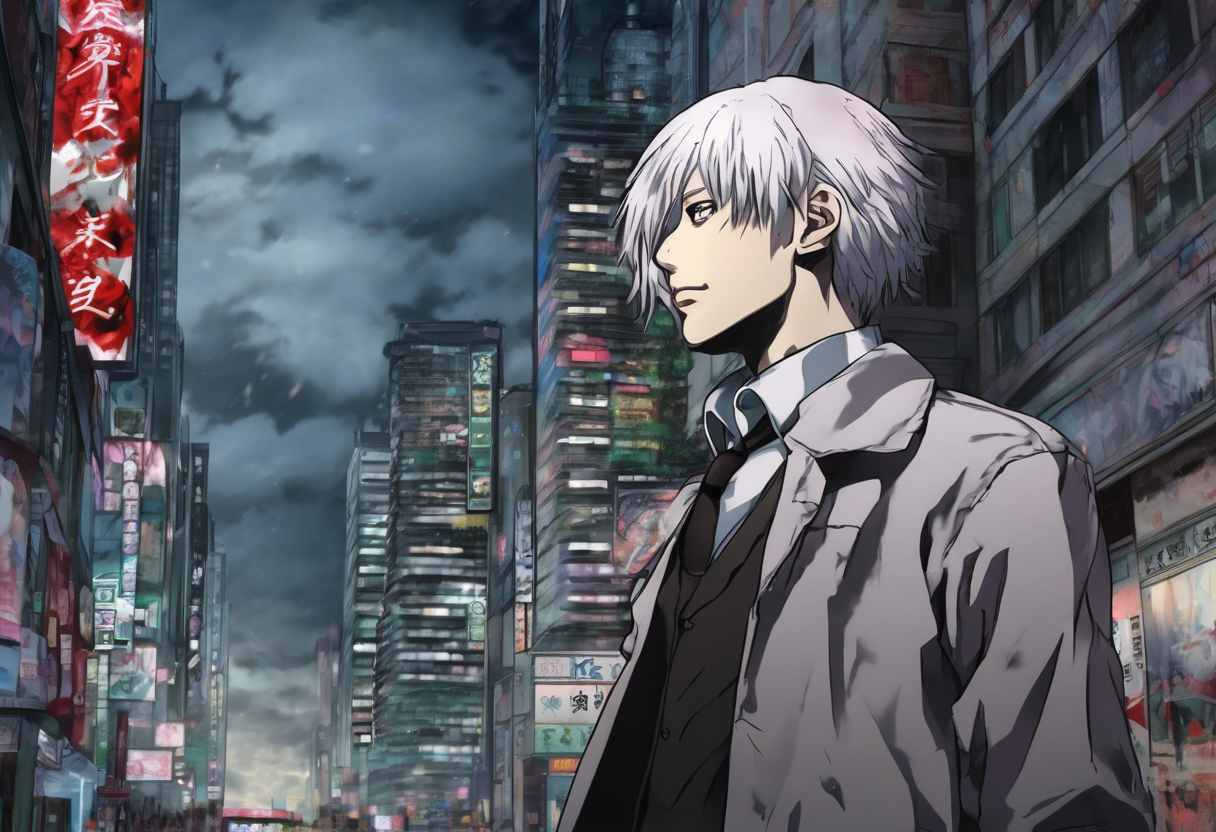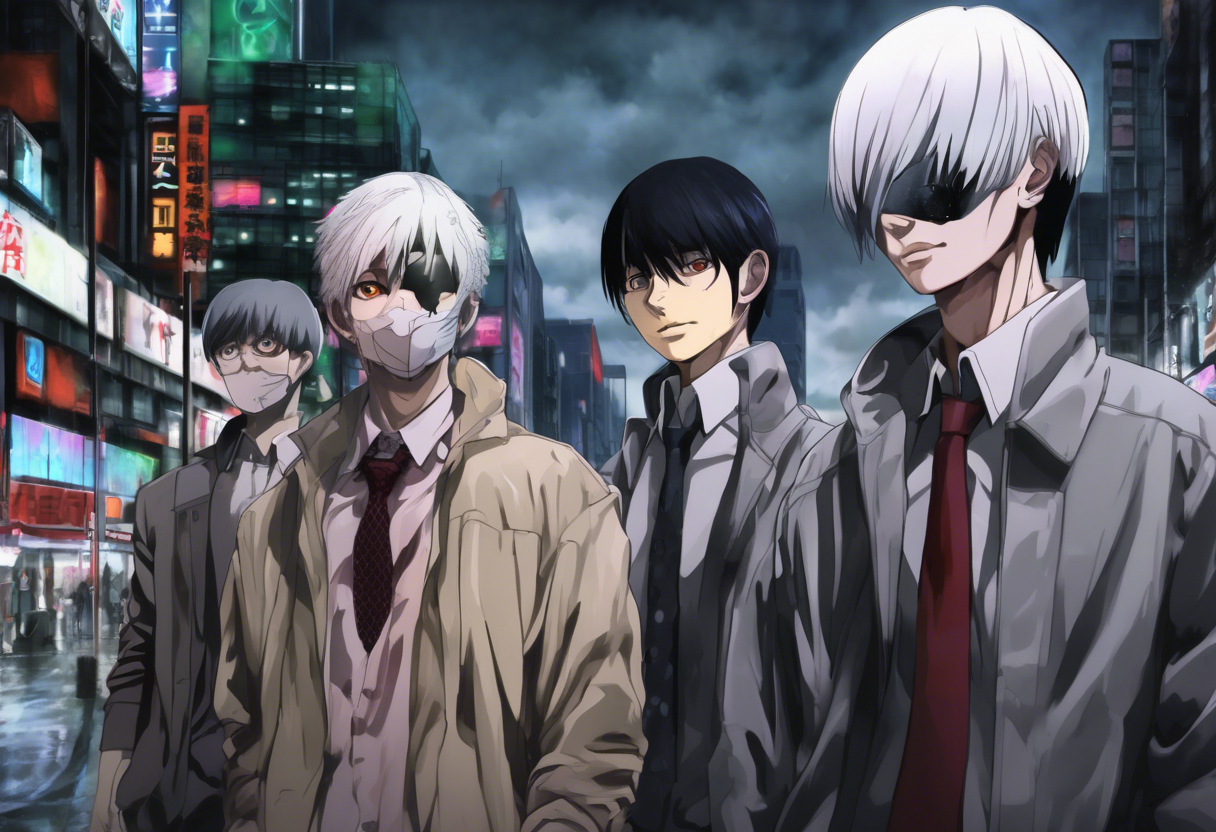Contents
Tokyo Ghoul – Episode 6: Cloudburst
Introduction
"Tokyo Ghoul – Episode 6: Cloudburst" is a pivotal episode in the first season of the anime series "Tokyo Ghoul," based on the manga by Sui Ishida. The episode, titled "Cloudburst" or "驟雨" in Japanese, was directed by Shuhei Morita and written by Chūji Mikasano. It was produced by Pierrot and aired on August 26, 2014. This episode stands out within the anime genre for its intense action sequences, deep character development, and the exploration of complex themes such as coexistence, identity, and the moral ambiguities of a world where ghouls and humans are in conflict.
Plot Summary
The episode begins with the aftermath of the intense battle between Touka Kirishima and Shuu Tsukiyama, a ghoul known as the "Gourmet" for his sadistic and cannibalistic tendencies. Tsukiyama had kidnapped Kimi, the lover of Nishiki Nishio, to lure out Ken Kaneki, the main protagonist who is a half-ghoul. The fight concludes with Touka delivering a devastating blow to Tsukiyama, ending his reign of terror for the time being [3][5].
Following the battle, Touka is inclined to kill Kimi because she has seen too much about the ghouls, particularly Ken and Nishiki. However, Kimi’s innocent and admiring comment about Touka’s kagune (the ghoul’s predatory organ) disarms Touka, and she decides to spare Kimi’s life. This moment highlights Touka’s complex character, showing a softer side beneath her tough exterior [1][3].
As the episode progresses, Nishiki Nishio, who was severely injured during the fight against Tsukiyama, decides to join Anteiku, a ghoul café, to recover and find a sense of community. This decision marks a significant change in Nishiki’s life, as he begins to work at the café in exchange for "guilt-free" meals, symbolizing his attempt to find a more stable and peaceful existence [3][5].
Meanwhile, Hinami Fueguchi and her mother, Ryoko, are a central focus of the episode. Hinami is eager to learn and grow, as evidenced by her explanation of what a cloudburst is, a term she learned from Ken. This scene underscores the bond between Hinami and Ken, as well as Hinami’s curiosity and desire for knowledge [2][5].
The relationship between Hinami and Ryoko is also explored in depth. Ryoko is struggling with the fact that Hinami is becoming increasingly adamant about seeing her father, who is actually dead. This subplot adds a layer of emotional complexity to the story, highlighting the challenges faced by ghoul families and the importance of family bonds in a world filled with danger and uncertainty [5].
On the human side, the Commission of Counter Ghoul (CCG) is introduced more prominently. Investigators like Kureo Mado and Akira Mado are on the hunt for ghouls, and their actions lead to a confrontation with Jason, a powerful ghoul. This encounter results in the death of Dr. Fueguchi, whose research and family connections become crucial to the plot. The CCG’s involvement sets the stage for future conflicts and explores the themes of persecution and the blurred lines between good and evil [5].
The episode also delves into the personal relationships and emotional struggles of the characters. Ken and Touka share a moment where they discuss the possibility of humans and ghouls being in love, reflecting on the societal norms and the personal costs of their identities. This conversation underscores the central theme of the series: the quest for acceptance and coexistence in a world divided by fear and prejudice [3].
As the episode concludes, the characters are left to deal with the aftermath of their battles and personal revelations. The atmosphere shifts from intense action to a more reflective tone, setting the stage for the next arc of the story. The introduction of new characters and plot threads, such as the CCG and the Aogiri Tree, promises a deeper exploration of the world and its complexities in future episodes.
Themes and Symbolism
"Tokyo Ghoul – Episode 6: Cloudburst" is rich in themes and symbolic elements that enhance its storytelling and resonance with audiences. One of the central themes is the struggle for identity and acceptance. Characters like Ken and Touka grapple with their dual identities as ghouls and their desire to coexist with humans. This theme is symbolized through the kagune, which represents both the power and the curse of being a ghoul [3].
The episode also explores the theme of family and community. Hinami’s desire to see her father and Ryoko’s efforts to protect her daughter highlight the importance of family bonds in a dangerous world. Similarly, Nishiki’s decision to join Anteiku symbolizes the search for a sense of belonging and community among ghouls [5].
The conflict between ghouls and humans is another significant theme. The CCG’s actions and the ghouls’ responses illustrate the cycle of violence and fear that perpetuates their conflict. This theme is symbolized through the Quinque, the CCG’s weapons against ghouls, which represent the technological and societal barriers between the two groups [5].
Cultural Impact
"Tokyo Ghoul – Episode 6: Cloudburst" has had a notable cultural impact since its release. The episode’s intense action sequences and emotional depth have made it a standout in the anime community. The series as a whole has influenced popular culture, with references in other anime and manga works. The themes of identity, community, and the struggle for coexistence have resonated with audiences worldwide.
Critical Reception
The episode received positive reviews from critics and audiences upon its release. The animation, particularly the depiction of the kagune powers, was praised for its beauty and intensity. The character development, especially the complexities of Touka and Nishiki, was also commended. However, some critics noted the censorship in certain scenes, which affected the viewing experience. Despite this, the episode was generally well-received for its engaging storyline and emotional depth [3][4].
Legacy
"Tokyo Ghoul – Episode 6: Cloudburst" continues to be relevant in the anime community and beyond. The episode’s exploration of complex themes and its well-developed characters have inspired filmmakers and artists. The series as a whole has become a benchmark for dark fantasy anime, influencing subsequent works in the genre. Its enduring popularity is a testament to its ability to engage audiences with its compelling narrative and deep character studies.
References
- https://www.imdb.com/title/tt3953714/
- https://tokyoghoul.fandom.com/wiki/Episode_6
- https://triptychalessandro.wordpress.com/2014/08/27/tokyo-ghoul-episode-6-review-cloudburst/
- https://viscountxela.wordpress.com/2014/08/10/review-tokyo-ghoul-episode-6/
- https://wherever-i-look.com/tv-shows/anime/tokyo-ghoul-season-1-episode-6-cloudburst-overview-review-with-spoilers

